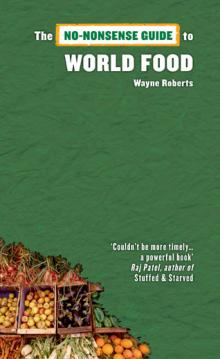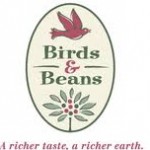I finally finished the biggest little book I’ve read in a while: Wayne Roberts’ The No-Nonsense Guide to World Food, 2008. (merci François!)
World food is clearly a vast topic, but Roberts is a man for the task and walks us though the whys and wherefores of our current global food systems, and more importantly, how we got to be here.
Pulling from various sources, sector experts and personal experiences that have taken him around the world, Roberts uses simple, direct language that will appeal to those hungry to learn more about the reality of our global food situation.
Roberts begins by explaining how a food system, is exactly that, a system. And as a systemic entity (think respiratory, circulatory), it reaches far into all aspects our lives, and our communities. Family meal times, recipes handed-down over generations, seasonal celebrations and cultural festivals all tie us back to the food we eat – and to the land where we live. But the post-war modernist approach to food production, which industrialized agriculture and turned food into a commodity, drew us away from this connectedness, and has managed to pit Global North against Global South. And we are all poorer for it.
This book will give you ideas of how to get your food system back.
As David Suzuki writes on the inside cover page, “Books like this get us started in our thinking and our actions.”
I’ve been noticing the birds this year, migrating south. It’s a beautiful site to behold if you don’t think about what it means: “See ya, suckas, we’s outta here!”
They are not so dumb, those birds. They are off to warmer climes in South and Central America, where hopefully there is a forest waiting for them, or at least some agroforestry that has not completely destroyed their winter habitat.
Yes, bird habitat is decreasing and, strange as it may sound, your cup of coffee has a lot to do with it.
As you already know, the clear cutting of tropical rain forests is destroying traditional bird sanctuaries, not to mention entire ecosystems. As a direct result, bird populations are decreasing. And by birds, I mean local and migratory birds. And by migratory, I mean our birds, or the ones we like to think of as ours – the ones we say good-bye to each fall and welcome back each spring.
Some of these birds return to their forested nesting ground only to find wide-open field. With nowhere to nest, they perish. Some, however, are able to seek refuge in shade coffee farms – farms that use a natural tree shade canopy to grow its crop.
However, after chatting with Madeleine Pengelley, owner of certified Bird Friendly® Birds and Beans roastery and café, I understand that not all shade coffee farms are created equally.
Coffee is naturally a shade-loving plant. Although originally imported from Africa, coffee can grow wild in South and Central American forests. It has also been traditionally grown for centuries in small-scale, rustic shade farms that make use of the natural forest canopy, usually old growth or secondary forest, to produce slower ripening and richer tasting coffee.
In the 1960s, in the name of progress and higher yield, a strain of coffee was developed that was able to tolerate the bright sun. Farmers cleared their land, sold their lumber, and planted the new coffee.
Yes, yield went up and so did sales, but bean quality and taste went down — as did local water and soil quality, animal and bird populations, and any extra income farmers might have earned from wood or fruit products provided by the former forest.*
As a result, shade coffee farms began to emerge as a new trend to counteract the negative effects of sun-grown coffee. These farms use a number of assorted shade trees and other plants to create a canopy that enables the type of symbiotic ecosystem that supports life and sustainable coffee cultivation.
Shade farming works with the environment, not against it; as a result, it doesn’t require the chemical inputs like fertilizers, pesticides, fungicides and herbicides that clear cut coffee farms have come to rely on.
Shade coffee farming is an organic and sustainable model that offers protection to endangered birds and wildlife, not to mention a viable livelihood for local farmers and unpolluted water to all communities downstream.
Unfortunately, economic realities being what they are, even well intentioned shade farmers are at times forced to chop down a few trees. The income from the lumber can be the difference between a child going to school that year or not. And the next year, it can be the same story.
I find no fault with the farmers who are simply doing what is necessary to get by, but if we could make the living tree more valuable to a farmer than the lumber it produces, then we’d be getting somewhere, says Madeleine.
Working towards this model is the Smithsonian’s Migratory Bird Center’s Bird Friendly® coffee certification program, which encourages coffee farmers to follow specific shade management practices. The various criteria include canopy height, foliage cover, tree diversity, leaf litter, and so on, all of which guarantee a minimum shade of 40% and an organic, sustainable and fair trade product.
Coffee ain’t local food where I live. But when you can’t go local, you go organic, sustainable, fair trade and, now, Bird Friendly®. This is not yet another food certification for you to contend with, this makes a lot of sense and does affect you in your own backyard. They are your birds too.
We do have the ability to change this particular problem because it is motivated by our own consumption habits.
Take a minute to sip on that.
* Read more about food sovereignty and agroforestry in Wayne Roberts’ The No-Nonsense Guide to World Food, 2008, ISBN 978-1-897071-44-1.

